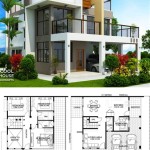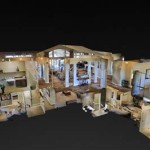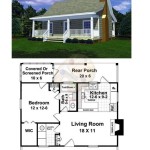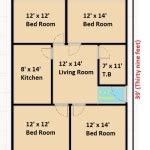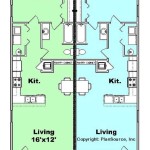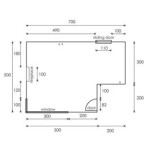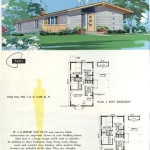House Plan Design for 500 Square Feet: Maximizing Space and Functionality
Designing a house plan for a mere 500 square feet presents a unique challenge, demanding careful consideration of space maximization and functional efficiency. This limitation necessitates strategic planning to incorporate all essential living areas – sleeping, cooking, bathing, and relaxing – without sacrificing comfort and aesthetic appeal. The success of such a project hinges on a deep understanding of space-saving techniques, smart storage solutions, and the skillful selection of materials and finishes.
The initial step involves a thorough assessment of the occupant's lifestyle and needs. Understanding these requirements is crucial for determining the layout and prioritizing specific areas. A single individual, for example, might prioritize a larger living area and a compact kitchen, while a couple might require more storage space and a slightly larger bathroom. This needs analysis informs every subsequent design decision.
Space planning is paramount. Open-concept designs are frequently employed in small spaces to create a sense of airiness and prevent the feeling of being cramped. This typically involves combining the living room, dining area, and kitchen into a single, flowing space. Visual separation can be achieved through the strategic placement of furniture, area rugs, or subtle changes in flooring material.
Vertical space is a valuable asset in small homes. Utilizing the full height of the walls for storage, through shelves, cabinets, and even lofted beds, can significantly increase the available space. High ceilings, if feasible, can further enhance the perception of spaciousness and allow for the inclusion of mezzanine levels or storage platforms.
Furniture selection plays a crucial role. Multifunctional furniture is highly desirable, such as sofa beds, folding tables, and storage ottomans. These pieces offer flexibility and allow a single item to serve multiple purposes, minimizing clutter and maximizing usability. Built-in furniture, custom-designed to fit the specific dimensions of the space, can also be a highly effective solution.
Lighting is another critical element in small house design. Natural light is preferred, as it makes spaces appear larger and more inviting. Large windows, skylights, and light wells can be incorporated to maximize daylight penetration. In areas where natural light is limited, artificial lighting should be carefully planned to provide adequate illumination and create a warm and welcoming ambiance. Recessed lighting, track lighting, and strategically placed lamps can all contribute to a well-lit and visually appealing space.
Material selection also contributes to the overall feeling of spaciousness. Light colors and reflective surfaces can help to bounce light around the room, making it appear larger and brighter. Mirrors, strategically placed, can also create the illusion of depth. Clutter should be minimized, and a consistent color palette can help to unify the space and prevent it from feeling disjointed.
The layout of the bathroom and kitchen requires particular attention. In the bathroom, consider a shower instead of a bathtub to save space. Wall-mounted toilets and sinks can also free up floor space. In the kitchen, compact appliances, such as a small refrigerator and a two-burner cooktop, can be used to conserve space. Ample counter space is essential, and storage solutions like pull-out shelves and spice racks can help to keep the kitchen organized.
Flexibility is key to successful small house design. The ability to adapt the space to different needs and activities is crucial. This can be achieved through modular furniture, movable partitions, and adaptable storage solutions. Designing for change allows the house to evolve with the occupant's needs over time.
Key Point 1: Strategic Space Planning and Layout Optimization
The foundation of any successful 500 square foot house plan lies in meticulous space planning. This encompasses more than simply fitting rooms into a limited area; it demands a deep understanding of how occupants will interact with the space and how each area can be optimized for maximum functionality. The process starts with a detailed floor plan, paying close attention to circulation patterns and the relationship between different zones.
Open-concept living, as previously mentioned, is a prevalent strategy. However, the effective implementation of this concept requires careful demarcation of different zones. This can be achieved through subtle changes in floor level, the use of different flooring materials, or the strategic placement of furniture to create visual barriers. For instance, a low bookshelf can serve as a partition between the living area and the sleeping area, providing a degree of privacy without completely closing off the space.
The placement of windows and doors is also crucial. Windows should be strategically positioned to maximize natural light and Ventilation, while doors should be placed to minimize their impact on circulation and usable space. Sliding doors or pocket doors can be used to save space compared to traditional swing doors.
Consider the flow of movement throughout the house. Avoid creating dead ends or narrow passageways that can make the space feel cramped. Ensure that there is a clear and direct path between different areas, allowing occupants to move freely and comfortably.
Key Point 2: Multifunctional Furniture and Smart Storage Solutions
In a 500 square foot house, every piece of furniture must earn its place. This necessitates a focus on multifunctional furniture that can serve multiple purposes. A sofa bed, for example, functions as both a seating area and a sleeping space, effectively doubling the functionality of that particular area. Similarly, a coffee table with built-in storage can provide a place to rest drinks and snacks while also offering valuable storage space for books, magazines, or other items.
Folding tables and chairs are another excellent option. These can be easily stored away when not in use, freeing up valuable floor space. Wall-mounted desks can also be a space-saving alternative to traditional desks, providing a work surface when needed and folding away when not in use.
Smart storage solutions are equally important. Utilizing vertical space is crucial, with shelves and cabinets extending all the way to the ceiling. Built-in storage units, custom-designed to fit the specific dimensions of the space, can maximize storage capacity and seamlessly integrate with the overall design. Consider incorporating storage into unconventional places, such as under the bed, under the stairs, or even within the floor.
Organization is key to maintaining a clutter-free and functional small home. Implement a system for organizing belongings and make it a habit to declutter regularly. Label storage containers and create designated spaces for different items. This will help to keep the space organized and prevent it from feeling overwhelming.
Key Point 3: Utilizing Light and Color to Enhance Perceived Space
Light and color are powerful tools that can significantly impact the perceived size and feel of a small space. Maximizing natural light is essential. Large windows, skylights, and light wells can be incorporated to flood the space with daylight, making it appear larger and more open. Avoid using heavy curtains or blinds that can block natural light. Instead, opt for sheer curtains or blinds that allow light to filter through while still providing privacy.
Mirrors are another effective way to enhance the perception of space. Strategically placed mirrors can reflect light and create the illusion of depth, making the room appear larger than it actually is. Consider placing a large mirror on a wall opposite a window to maximize the effect.
The color palette should primarily consist of light and neutral colors. Light colors reflect light, making the space appear brighter and more open. Avoid using dark colors, which can absorb light and make the space feel smaller and more enclosed. Accent colors can be used to add visual interest and personality, but they should be used sparingly. A consistent color palette throughout the house can help to unify the space and create a sense of flow.
Artificial lighting should be carefully planned to supplement natural light. Recessed lighting provides general illumination without taking up valuable space. Track lighting can be used to highlight specific areas or features. Task lighting, such as desk lamps and under-cabinet lighting, provides focused illumination for specific activities. Choose light fixtures that are appropriately sized for the space. Overly large fixtures can overwhelm a small room, while undersized fixtures may not provide adequate illumination.
In conclusion, designing a 500 square foot house plan demands a creative and strategic approach. By prioritizing space planning, embracing multifunctional furniture, and leveraging the power of light and color, it is possible to create a comfortable, functional, and aesthetically pleasing living space that meets the needs of its occupants.

Small Floor Plans On House

500 Square Foot Smart Sized One Bedroom Home Plan 430817sng Architectural Designs House Plans

500 Square Feet Simple Home Plan Modern House Floor Plans Small Elevation Design

500 Sq Ft House Plans 2 Bedroom N Style Plan With Loft

500 Square Feet Home Design Ideas Small House Plan Under Sq Ft

Housing Plan For 500 Sq Feet Simple Single Floor House Design Plans Daily

500 Square Feet And Less Guest House Plans Studio Floor Cottage Layout

500 Square Feet Home Design Ideas Small House Plan Under Sq Ft

500 Sq Ft House Plans Small Floor

3bhk Small House Plan 500 Square Feet 20 25 Sqft Design
Related Posts

